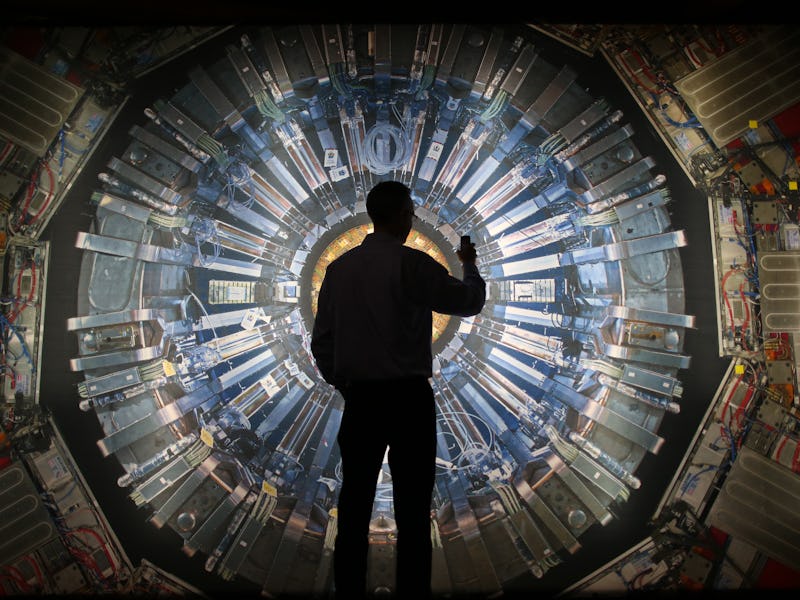Rogue Data May Introduce Physicists to the Higgs-Boson's Overweight Cousin
This would mess up the Standard Model of Physics but good.

Two separate teams of researchers at the Large Hadron Collider at CERN, the European Organization for Nuclear Research, have identified similar quirks in data that they agree might be something new.
The good scientists doing this research have been cautious about announcing their findings, which have not yet risen to the level of statistical significance and therefore shouldn’t be declared a discovery. But they may be on track to adjust the Standard Model of Physics, which is the formal way of saying physics.
The Large Hadron Collider
Since the summer, the Large Hadron Collider has been conducting its most explosive experiments ever, beating protons together at more than double the energy that they found the Higgs-Boson. The scientists definitely predicted a whole lot of interesting debris from these tests, but the two teams that analyze the information independent from one other are both talking about something they didn’t see coming.
The actual finding relates to an apparent excess of gamma rays — huge spikes of energy — in the data that shouldn’t be there based on the Standard Model.
As for describing what it might be, physicists who talked to the New York Times speculated that it could be a “heavier cousin” of the Higgs-Boson or even “a graviton, the supposed quantum carrier of gravity, whose discovery could imply the existence of extra dimensions of space-time.”
At this point though, skeptics would be remiss if they didn’t point out that numerous almost-discoveries that cropped up during the search for the Higgs-Boson never managed to achieve statistical validity
Particle acceleration is cool.
In fact, taken separately, neither of the two teams that analyze data at CERN — ATLAS and CMS — would have enough evidence of a new particle to be worth presenting. With statistical values for ATLAS between 1.2 and 2.6 sigma and for CMS of 1.9 to 3.6 sigma — 5 sigma indicates a bona fide discovery — it’s fairly impressive the teams even noticed anything. Still, good communication leads to good work.
Kyle Cranmer, a physicist from New York University who works on ATLAS, put the odds of the discovery being a fluke at 93-to-1, a far cry from the 3.5 million-to-1 level of certainty needed before we can start digging a grave for the Standard Model. Nonetheless, there are plenty of scientists who have been hoping to see the death — or at least major injury — of the Standard Model for a while now. This New Physics certainly has a lot to explore in these new results, but as of now, scientists don’t have the one thing they crave: certainty.